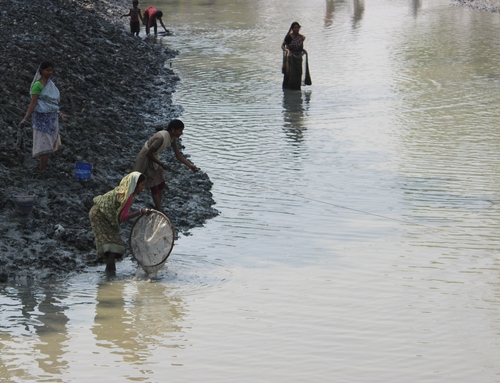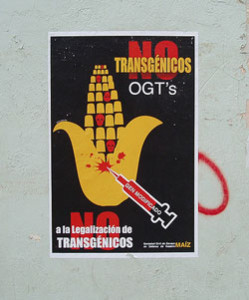- the political, economic and institutional contexts in which initiatives occur
- the potential competition or conflict between different actors and their goals, and
- the consequences in terms of who wins and who loses from different aspects of climate compatible development.
The first blog and second blog respectively came from Thomas Tanner, Overseas Development Institute (ODI) and Pete Newell, University of Sussex.
Challenges and dilemmas of REDD+
How can a developing country like Mozambique build resilience to climate risks such as floods and droughts, while at the same time seizing new economic opportunities and global climate finance? The debate around the global programme for Reducing Emissions from Deforestation and Degradation, known as REDD+, highlights many of the challenges and dilemmas countries face in trying to capture synergies between goals for adaptation, mitigation and development.
REDD+ is an international mechanism which offers incentives to developing countries to reduce carbon emissions from forested lands and increase conservation of forest carbon stocks. While originally set up as a mitigation mechanism, its goals have been expanded to account for development and adaptation goals. In principle, it can be seen as an instrument to promote climate compatible development. Things are as ever more complicated in practice, however.
The REDD+ strategy in Mozambique has been years in the making. In 2012, according to the country’s “REDD readiness proposal”, one third of Mozambique’s entire land area was subject to proposals for forest conservation and carbon forestry from private business and global conservation agencies, which aspire to exploit carbon markets for private gain, or biodiversity conservation.
What are the interests of the diverse stakeholders in REDD+ in Mozambique?
Opinions of REDD+ among local actors vary. For the government and many donors, it is a way of in which Mozambique can contribute to global emissions reduction and simultaneously generate revenue, while also safeguarding forest resources against escalating threats of deforestation, and support livelihoods,. For the private sector, it is a business opportunity, although one that – at least at the moment – looks less promising than a few years ago because of a weak carbon market. NGOs and civil society organisations differ; some are sharply opposed to it, whereas others consider that it REDD+ and carbon forestry projects offer real potential opportunities, for farmers, rural communities and the nation as a whole: Following a wave of large-scale land acquisitions for commercial food production, biofuels and forestry, REDD+ raises a spectre of “green grabbing”, whereby large areas are dedicated to forest conservation or monoculture plantations, excluding people and usurping land rights.
Is there a viable alternative to REDD+ and what is the way forward?
There are real difficulties in envisioning alternative models which could pay rural communities to help deliver critical global environmental services on the ground. One model seen as promising by many was Envirotrade’s Sofala Carbon Project, which paid farmers for tree planting and improved forest management to earn investors returns from the sale of carbon credits, and create local social benefits. Farmer carbon payments were frontloaded before the trees reached maturity, failing to guarantee long-term carbon values and undermining sustainability. The market value of carbon has fallen, so despite a potential win-win business model, there is little commercial incentive for further investment. In practice the greater share of carbon accumulation came not from tree-planting but better natural forest management activities supported not by the market but by an EU grant, and this is where carbon measurement methodologies are weakest. For REDD+ to succeed without excluding people, it will need to address these problems.
Despite the at times very polarised debate on REDD+ in Mozambique, the study found an extraordinary – and perhaps surprising – willingness amongst local private sector and civil society players to engage with each other, and with local communities and government to implement the programme. However, it is clear that there is a need to deepen and broaden government engagement with sustainable forest management and climate change adaptation, especially at lower levels. So far, the legal and institutional framework developed for REDD+ concentrates on procedures for licensing large scale projects, rather than improving existing forest management and utilisation practices which lead to forest degradation and loss. It is striking how disconnected discussions about REDD+ have become from debates about how livelihoods, agriculture, and vulnerable national regions can adapt to climate change. Resolving forest tenure challenges and broader land governance issues will be key to progress. For REDD+ to work it is also clear that new forms of capital will need to emerge, and promote community enterprise; it will not be possible to rely entirely on the market.
Ultimately, the outcomes of REDD+ for climate compatible development in Mozambique will depend on the existence of strong governance mechanisms and ‘safeguards’ in place to secure tenure rights and benefits from forest resources and carbon stocks for local communities. In order to provide incentives for rural communities to participate and protect them against land alienation as a result of land grants for large scale project investments
Whatever the view on REDD+: The fact remains that forest management in Mozambique is crucially important for the country’s development and for adaptation strategies, and can offer large potential carbon gains. For REDD+ to work, fundamental forest governance challenges need to be addressed. Questions thus remain: Is it conceivable that REDD+ can be modified so that these (and other) challenges can be overcome, or is it ‘dead in the water’? If the latter, what other mechanisms for forest governance could be envisaged, taking into account climate compatible development goals? And, how much can be achieved in Mozambique through implementation of current legislation, and what additional challenges does climate change bring?
For more information on the project, contact Lars Otto Naess: L.Naess@ids.ac.uk






